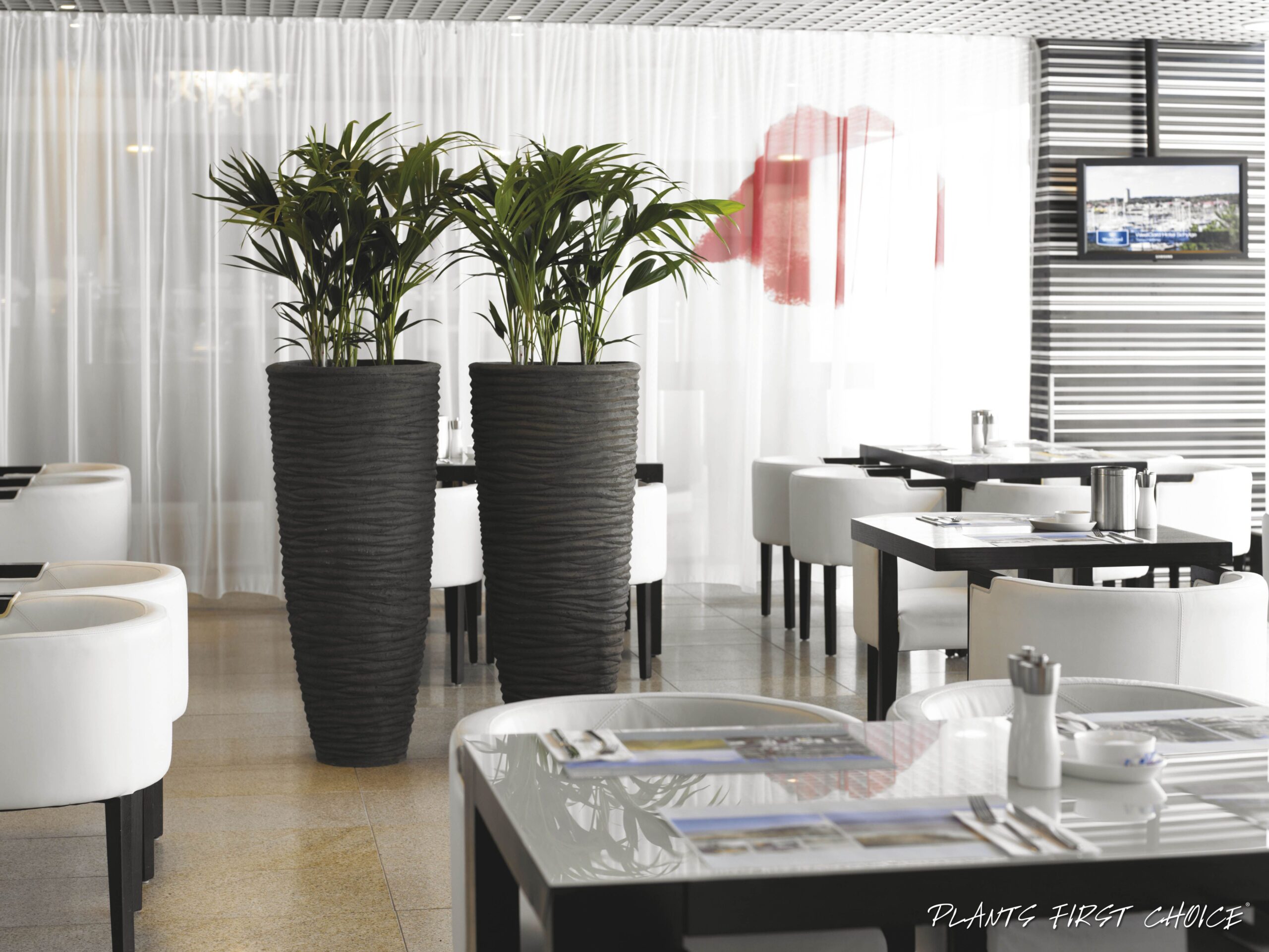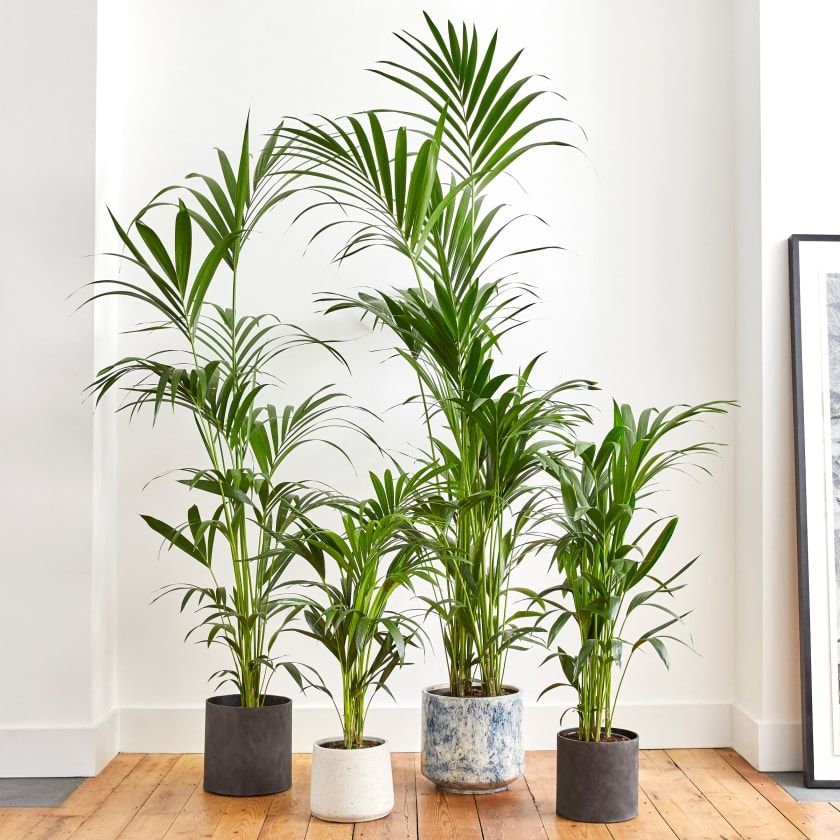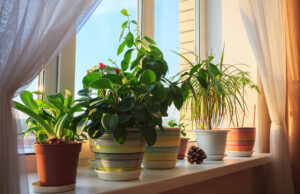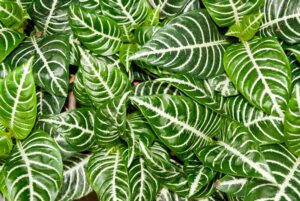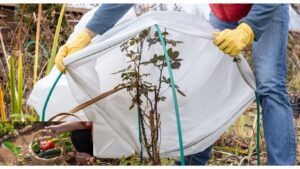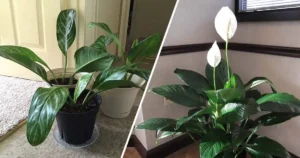The Kentia Palm Tree (Howea forsteriana) is a favorite among indoor plant enthusiasts for its elegant fronds and resilience. Originating from Lord Howe Island in the Pacific, this palm has adapted well to indoor environments, making it a popular choice for those looking to add a touch of the tropics to their homes or offices. Indoor plants not only enhance the aesthetic appeal of a space but also offer numerous benefits, such as improving air quality and reducing stress. Among these, the Kentia Palm stands out due to its graceful appearance and low maintenance requirements.
On This Page
What is a Kentia palm tree?
The Kentia Palm, scientifically known as Howea forsteriana, is native to Lord Howe Island, situated off the east coast of Australia. This island’s unique climate has contributed to the palm’s ability to thrive in various indoor conditions.
Origin and Natural Habitat of Kentia Palm Tree
Kentia Palms tree grow naturally in the understorey of forests on Lord Howe Island, where they receive filtered light and high humidity. These conditions have shaped their adaptability to indoor environments where direct sunlight is limited, and humidity levels can vary.
Description and Physical Characteristics
The Kentia palm tree is characterized by its slender trunk, which is typically smooth and ringed with leaf scars. The fronds are long, arching, and feathery, with dark green leaflets that can reach up to 3 meters in length. Mature palms can grow up to 10 meters tall in their natural habitat, but when grown indoors, they usually reach heights of 2 to 3 meters.
Varieties and Types of Kentia Palm tree
There are two primary species within the Howea genus:
- Howea forsteriana (Kentia palm tree) the more common variety, known for its elegant and slightly arching fronds.
- Howea belmoreana (Belmore Sentry Palm) similar in appearance but with a more upright growth habit and stiffer fronds.
Both types are suitable for indoor cultivation, but Howea forsteriana is more widely available and preferred due to its graceful form.
Benefits of Growing Kentia Palm Tree Indoors
Growing a Kentia Palm tree indoors offers numerous advantages, both aesthetic and practical. Here are some key benefits:
Aesthetic Appeal and Interior Decoration
The Kentia Palm’s elegant, arching fronds add a touch of sophistication to any interior space. Its lush, green foliage can complement a variety of decor styles, from modern to traditional. The palm’s height and form make it a perfect statement piece in living rooms, offices, and other large spaces.
Key Points:
- Enhances interior decor with its graceful appearance
- Versatile enough to fit different design styles
- Ideal for large spaces as a focal point
Air Purification Qualities
Like many indoor plants, the Kentia Palm tree is effective at improving air quality. It helps filter out toxins such as formaldehyde, benzene, and carbon monoxide from the air, making your living environment healthier.
Key Points:
- Removes harmful toxins from the air
- Contributes to a healthier indoor environment
- Promotes better respiratory health
Case Study: NASA’s Clean Air Study highlighted the effectiveness of indoor plants, including palms, in improving air quality. The study found that plants can remove up to 87% of air toxins in 24 hours.
Low Maintenance Requirements
One of the standout features of the Kentia Palm tree is its low maintenance needs. It tolerates low light, infrequent watering, and varying humidity levels, making it an excellent choice for both novice and experienced plant owners.
Key Points:
- Thrives in low light conditions
- Requires minimal watering
- Adapts to different humidity levels
- Resistant to pests and diseases
Mental and Emotional Well-being
Having plants indoors, such as the Kentia Palm tree, can have positive effects on mental and emotional well-being. Studies have shown that being around greenery reduces stress, increases productivity, and enhances overall mood.
Key Points:
- Reduces stress and anxiety
- Increases productivity and concentration
- Boosts overall mood and well-being
Ideal Conditions for Growing Kentia Palm Tree Indoors
To successfully grow a Kentia palm tree indoors, it is essential to provide the right conditions. Here’s a comprehensive guide on the ideal environment for your Kentia Palm tree.
Light Requirements
Kentia Palms are known for their ability to thrive in various light conditions, making them perfect for indoor settings.
Best Lighting Conditions (Indirect Light)
- Kentia Palms treeto prefer bright, indirect light. Place them near a north or east-facing window where they can receive filtered sunlight.
- Direct sunlight can scorch their leaves, so avoid placing them in spots with intense, direct sun exposure.
Handling Low Light Conditions
- One of the Kentia Palm’s strengths is its ability to tolerate low light conditions. While it grows best in bright, indirect light, it can still survive in dimmer areas of your home or office.
- If your Kentia Palm is not getting enough light, you might notice slower growth and paler leaves. In such cases, consider supplementing with artificial grow lights.
Temperature and Humidity
Kentia palm tree are adaptable but still prefer specific temperature and humidity ranges.
Temperature
- Ideal temperature range: 60–85°F (15-29°C).
- Avoid temperatures below 50°F (10°C), as the palm can suffer cold damage.
- Keep the plant away from drafts, air conditioning vents, and heating units, as sudden temperature changes can stress the palm.
Humidity
- Kentia Palms thrive in moderate to high humidity. Aim for a humidity level of around 50-60%.
- In dry indoor environments, especially during winter, increase humidity by using a humidifier, placing a water tray near the plant, or misting the leaves regularly.
Watering Requirements
Proper watering is crucial for the health of your Kentia Palm.
General Watering Guidelines
- Allow the top inch of soil to dry out before watering. Overwatering can lead to root rot, while underwatering can cause the fronds to brown and dry out.
- Water thoroughly until water drains out of the bottom of the pot, ensuring even moisture throughout the soil.
Seasonal Adjustments
- During the growing season (spring and summer), the plant may require more frequent watering.
- In the dormant period (fall and winter), reduce the frequency of watering as the plant’s growth slows down.
Soil and Fertilization
The right soil and fertilization routine can significantly impact the growth and health of your Kentia Palm.
Soil Requirements
- Use a well-draining potting mix. A mix designed for palms or a combination of potting soil, peat moss, and perlite works well.
- Ensure the pot has drainage holes to prevent waterlogging.
Fertilization
- Feed your Kentia Palm with a balanced, water-soluble fertilizer (such as 10-10-10) every 2-3 months during the growing season.
- Reduce or stop fertilizing during the dormant period to avoid nutrient build-up and potential root burn.
Example of a Suitable Potting Mix:
| Ingredient | Proportion |
| Potting Soil | 50% |
| Peat Moss | 25% |
| Perlite | 25% |
Propagation, Pruning, and Common Problems with Kentia Palm Tree Care
Propagation of Kentia Palm
Kentia Palms are typically propagated through seeds, as vegetative propagation methods like cuttings are not feasible for this plant. Here’s a step-by-step guide:
Seed Propagation:
- Obtain Fresh Seeds: Purchase fresh Kentia Palm seeds from a reputable supplier, as older seeds have lower germination rates.
- Soak Seeds: Soak the seeds in warm water for 1-2 days to soften the outer shell and speed up germination.
- Prepare Soil: Use a well-draining seed starting mix. A mixture of sand and peat moss is ideal.
- Plant Seeds: Sow the seeds about 1 inch deep in the soil. Cover the pot with plastic wrap to maintain humidity.
- Provide Warmth: Place the pot in a warm area with temperatures around 75-85°F (24-29°C).
- Maintain Moisture: Keep the soil consistently moist but not waterlogged.
- Germination: Seeds may take several months to germinate. Be patient and maintain the right conditions.
Pruning Kentia Palm Tree
Pruning is essential for maintaining the health and appearance of your Kentia Palm. Here are some tips:
Pruning Dead or Damaged Fronds:
- Identify Dead Fronds: Look for brown, dry, or yellowing fronds.
- Use Clean Tools: Use clean, sharp scissors or pruning shears to prevent disease spread.
- Cut Close to the Base: Cut the dead fronds close to the trunk, but avoid cutting into the trunk itself.
Avoid Over-Pruning:
- Kentia Palms grow slowly, so avoid excessive pruning. Only remove completely dead or severely damaged fronds.
- Pruning healthy green fronds can stress the plant and slow its growth.
Common Problems and Solutions
Despite being hardy, Kentia Palms can encounter some issues. Here are common problems and their solutions:
1. Yellowing Leaves
- Cause: Overwatering, nutrient deficiency, or low light.
- Solution: Adjust watering schedule, provide balanced fertilizer, and ensure adequate light.
2. Brown Leaf Tips
- Cause: Low humidity, underwatering, or salt build-up in the soil.
- Solution: Increase humidity, adjust watering, and flush soil with water to remove excess salts.
3. Pests
- Common Pests: Spider mites, scale, and mealybugs.
- Solution: Regularly inspect the plant, wipe leaves with a damp cloth, and use insecticidal soap or neem oil for infestations.
4. Root Rot
- Cause: Overwatering and poor drainage.
- Solution: Ensure proper drainage, allow soil to dry out between waterings, and repot with fresh, well-draining soil if necessary.
Example Table of Common Problems and Solutions:
| Problem | Cause | Solution |
| Yellowing Leaves | Overwatering, nutrient deficiency, and low light | Adjust watering, fertilize, and increase light |
| Brown Leaf Tips | Low humidity, underwatering, and salt buildup | Increase humidity, adjust watering, and flush soil |
| Pests | Spider mites, scales, and mealybugs | Inspect regularly, wipe leaves, and use insecticides |
| Root Rot | Overwatering, poor drainage | Ensure drainage, dry soil, and repot if necessary |
Display and Styling Ideas for Kentia Palm Tree Indoors
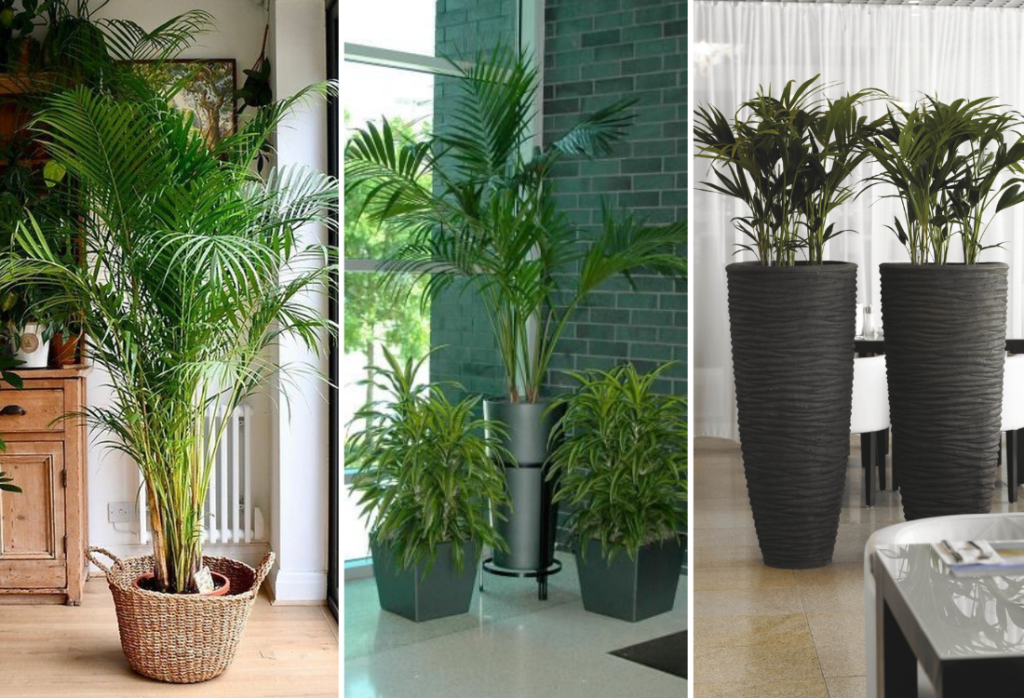
Choosing the Right Location
The placement of your Kentia Palm can significantly enhance its aesthetic appeal and ensure its healthy growth. Here are some tips on where to position your Kentia Palm:
Bright, Indirect Light Spots:
- Place your Kentia Palm near north or east-facing windows where it can receive bright, indirect light. This lighting mimics its natural habitat, promoting healthy growth.
- Avoid placing the palm in direct sunlight, which can scorch its leaves.
Highlighting Architectural Features:
- Position the palm in corners or beside furniture to highlight architectural features and create a focal point in the room.
- Use taller pots or plant stands to elevate the palm and make it a centerpiece.
Suitable Rooms:
- Living Rooms: Kentia Palms add elegance and a touch of nature to living spaces.
- Offices: They improve air quality and create a calming environment, enhancing productivity.
- Bedrooms: Their air-purifying qualities contribute to better sleep and relaxation.
Complementing Interior Decor
Kentia Palms are versatile and can complement various interior design styles. Here’s how to style them:
Modern and Minimalist:
- Use sleek, simple pots in neutral colors like white, black, or gray to match minimalist decor.
- Pair the palm with contemporary furniture and clean lines to create a sophisticated look.
Bohemian and Eclectic:
- Choose colorful, patterned pots or woven baskets to add a bohemian touch.
- Mix and match with other indoor plants and eclectic decor items for a vibrant, lively space.
Traditional and Classic:
- Opt for elegant ceramic or terracotta pots that complement traditional furniture and decor.
- Position the palm in rooms with classic elements like wood furniture and rich textiles to enhance the timeless appeal.
Using Pots and Planters
Selecting the right pot or planter is crucial for both aesthetic and functional purposes. Here are some considerations:
Size and Material:
- Choose a pot that is slightly larger than the palm’s root ball to allow room for growth.
- Ensure the pot has drainage holes to prevent waterlogging and root rot.
- Materials like terracotta, ceramic, and plastic each have their benefits; terracotta is porous and helps with aeration, ceramic is decorative, and plastic is lightweight and easy to move.
Design and Style:
- Match the pot’s design with your interior decor style.
- Use plant stands or decorative trays to elevate the pot and protect your floors.
Incorporating Kentia Palm in Interior Design
Here are some creative ways to incorporate Kentia Palm into your interior design:
Grouping with Other Plants:
- Create a lush indoor garden by grouping Kentia Palm with other tropical plants like Monstera, Philodendron, and Fiddle Leaf Fig.
- Vary the height and texture of the plants to create visual interest.
Accent Walls and Corners:
- Place the palm against an accent wall to draw attention and add depth to the room.
- Use it to fill empty corners and soften the edges of the room.
Balconies and Patios:
- During warmer months, place the Kentia Palm on balconies or patios to create a tropical retreat.
- Ensure the plant is not exposed to direct sunlight for extended periods.
Example of Potting and Styling:
| Style | Pot Type | Placement |
| Modern | Sleek, neutral pots | Near windows and corners |
| Bohemian | Colorful, woven baskets | Grouped with other plants |
| Traditional | Elegant ceramic pots | Beside classic furniture |
Frequently Asked Questions about Kentia Palm Care
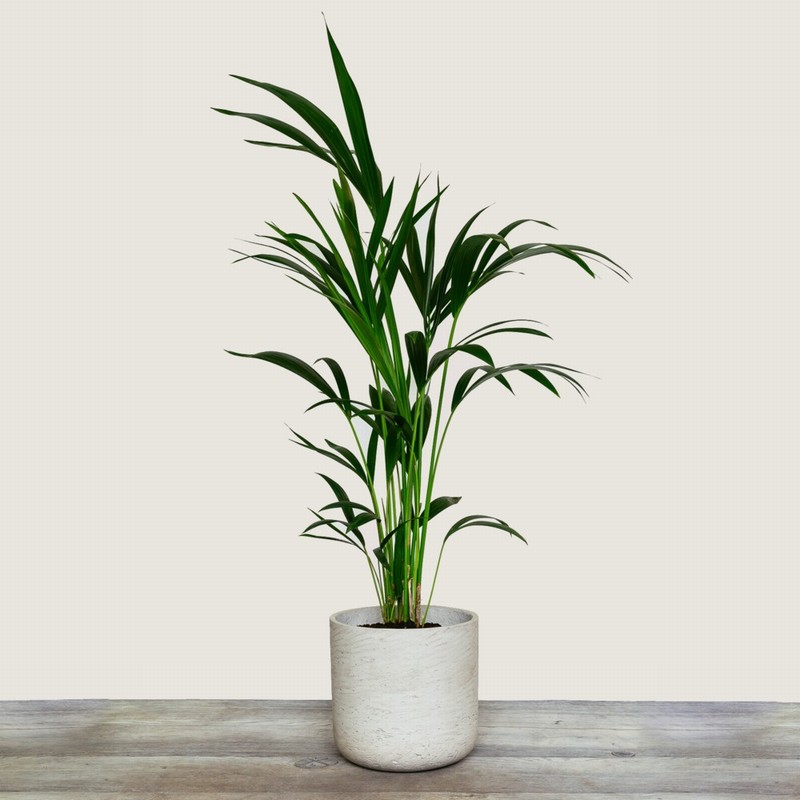
How Often Should I Water My Kentia Palm?
Watering Frequency:
- Water your Kentia Palm when the top inch of soil feels dry to the touch. This typically means watering every 1-2 weeks, depending on the humidity and temperature of your home.
- During the growing season (spring and summer), you may need to water more frequently. In the dormant period (fall and winter), reduce the watering frequency.
Signs of Overwatering:
- Yellowing leaves
- Soft, mushy stems
- Foul odor from the soil
Signs of Underwatering:
- Brown leaf tips
- Wilting fronds
- Dry, brittle soil
How Can I Increase Humidity for My Kentia Palm?
Increasing Humidity:
- Humidifiers: Use a humidifier in the room where your Kentia Palm is located to maintain a humidity level of 50-60%.
- Pebble Trays: Place a tray filled with water and pebbles beneath the plant pot. As the water evaporates, it will increase the humidity around the plant.
- Misting: Regularly mist the leaves with water, especially during dry winter months.
What Type of Soil is Best for Kentia Palm?
Soil Requirements:
- Use a well-draining potting mix designed for palms or a combination of potting soil, peat moss, and perlite.
- Ensure the pot has drainage holes to prevent waterlogging and root rot.
How Do I Fertilize My Kentia Palm?
Fertilization Tips:
- Use a balanced, water-soluble fertilizer (such as 10-10-10) every 2-3 months during the growing season.
- Reduce or stop fertilizing during the dormant period to avoid nutrient build-up.
- Avoid over-fertilizing, as it can cause root burn and damage the plant.
What Should I Do if My Kentia Palm Gets Pests?
Pest Management:
- Common Pests: Spider mites, scale, and mealybugs are common pests that can affect Kentia Palms.
- Prevention: Regularly inspect your plant for signs of pests. Clean the leaves with a damp cloth to remove dust and prevent infestations.
- Treatment: If you notice pests, use insecticidal soap or neem oil. Apply according to the product instructions and repeat as necessary.
Can Kentia Palm Survive in Low Light?
Light Tolerance:
- Kentia Palms can tolerate low light conditions, making them suitable for indoor environments with limited natural light.
- While they grow best in bright, indirect light, they can still survive in dimmer areas of your home or office. However, growth may be slower, and the fronds may be less vibrant.
Additional Resources for Kentia Palm Care
For further reading and in-depth information on Kentia Palm care, check out these external resources:
- University of Florida IFAS Extension – Comprehensive guide on palm care.
- Royal Horticultural Society – Detailed information on palm species and care tips.
- NASA’s Clean Air Study – Research on the air-purifying qualities of indoor plants.
Summary
Growing a Kentia palm tree indoors can enhance your living space with its elegant appearance and numerous benefits. By providing the right conditions, such as proper lighting, watering, and humidity, you can ensure your palm thrives and remains healthy. Regular care, including pruning and pest management, will keep your Kentia palm looking its best.
Now, we have covered the essential aspects of Kentia Palm care. This guide should help you create a thriving indoor environment for your palm. If you have any more questions or need further assistance, feel free to reach out. Happy gardening!
